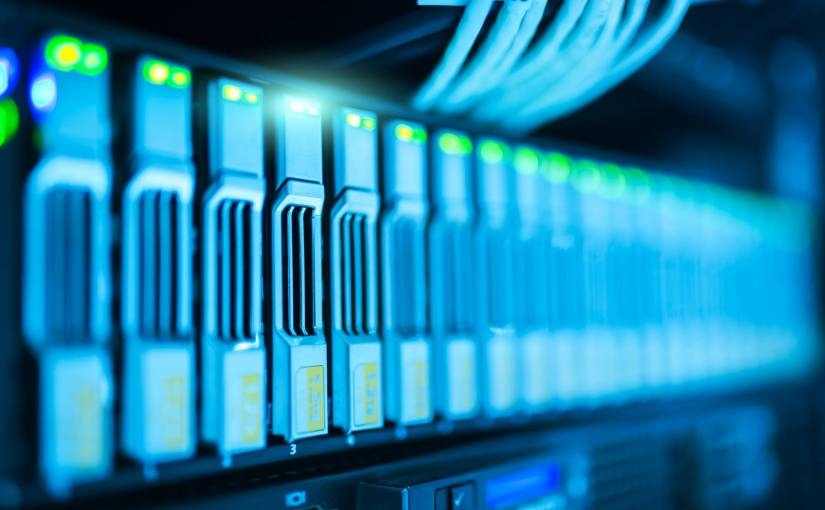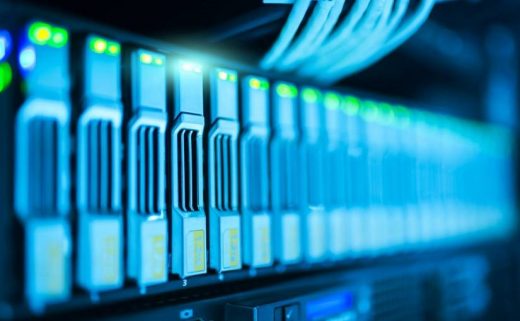Fog Computing and Its Role in the Internet of Things
Fog Computing and Its Role in the Internet of Things

Fog computing refers to a decentralized computing structure. The resources, including the data and applications, get placed in logical locations between the data source and the cloud. One of the advantages of fog computing is to keep many users connected to the internet at the same time. In essence, it offers the same network and services that cloud-based solutions provide, but with the added security of a decentralized network.
Difference Between Cloud Computing and Fog Computing
Cloud Computing
Cloud computing refers to the provision of computing and storage resources geographically distributed. Computing can occur over a variety of platforms, including public cloud and private cloud.
The cloud-computing platforms offer the opportunity to share and mix the workloads among the users over a scalable system. Cloud computing is essentially the ability to store and regain data from an off-site location.
Cloud computing is one of the main reasons conventional phones got “smart.” Phones don’t have sufficient, built-in space to store the data necessary to access apps and services. All the data is transmitted from and to the cloud to provide the services we need. Still, cloud computing technology has a challenge – the bandwidth constraint.
Fog Computing
Fog computing will be dominating the industry in the near future. The domination of Fog will be driven by a need to gather data closer to the source of the data (the user device). Devices are not able to perform the necessary processing in the cloud and the devices are physically constrained (low power and small size).
The ability to process the data locally is more important than in the past because fog computing increases the data’s security. With the evolution of the Internet of Things, more and more devices are being added to the network. Each device is wirelessly connected for data transmission and reception.
Fog computing is about how efficiently data is stored and accessed. Fog computing refers to the networking of the edge computing nodes dispersed in a network so that they can be geographically distributed but still provide an organized communication between those nodes.
The use of fog computing involves a complex process of interconnected edge devices. The edge devices include sensors, storage systems, and networking infrastructure that work together to capture and distribute data.
However, the flexibility of fog computing and its ability to gather and process data from both the centralized cloud and the edge devices of a network make it one of the most useful ways of dealing with the information overload we face today.
 Image Credit: nikhomk panumas; pexels
Image Credit: nikhomk panumas; pexels
Are Fog Computing and Edge Computing the Same Thing?
Fog computing is also referred to as “edge computing.” Edge computing is designed to solve issues by storing data closer to the “ground.” In other words, edge stores data in storage devices and local computers, rather than running all the data through a centralized DC in the cloud.
In essence, fog computing is responsible for allowing fast response time, reducing network latency and traffic, and supporting backbone bandwidth savings in order to achieve better service quality (QoS). It is also intended to transmit relevant data to the cloud.
IDC estimates that about 45 percent of the world’s data will be moved closer to the network edge by the end of 2025. Fog computing is claimed to be the only technology that will be able to withstand artificial intelligence, 5G, and IoT in the coming years.
Another IDC study predicts that edge devices will generate 10 percent of the world’s data even in 2020. Edge devices will fuel the need for more effective solutions for fog computing, resulting in reduced latency.
Edge Computing
Edge computing is, basically, a subset of fog computing. It refers to the data being processed close to where it emerged. Fog computing allows for more effective data processing, thereby reducing the possibility of data latency.
Consider fog computing as the way to process the data from where it is generated to where it is stored. Edge computing refers only to the processing of the data close to where it is generated. Fog computing encapsulates the edge processing and the network connections required to transfer the data from the edge to its end.
With edge computing, IoT devices are connected to devices such as programmable automation controllers. The automation controllers perform data processing, communication, and other tasks. With fog computing, the data is transferred from endpoints to a gateway. Then the data is transferred to sources for processing and return transmission. The geographically distributed infrastructure is aligned with cloud services to enable data analytics with minimal latency.
Both fog and edge computing help to turn data into actionable insights more quickly so that users can make quicker and more informed decisions. Then, fog and edge allow companies to use bandwidth more effectively while enhancing security and addressing privacy concerns. Since fog nodes can be installed anywhere there’s a network connection; fog computing is growing in popularity in industrial IoT applications.
The Role of Fog Computing in IoT
When a device or application generates or collects huge amounts of information, data storage becomes increasingly complex and expensive. When handling this data, network bandwidth also becomes expensive, requiring large data centers to store and share the information.
Fog computing has emerged as an alternative to the traditional method of handling data. Fog computing gathers and distributes resources and services of computing, storage, and network connectivity. It significantly reduces energy consumption, minimizes space and time complexity, and maximizes this data’s utility and performance.
The “Smart City”
Let’s take a smart city as an example. Data centers are not built to handle the demands of smart city applications. The ever-increasing amount of data transmitted, stored, and accessed from all IoT devices in a city will require a new kind of infrastructure to handle this volume. It is these applications that need fog computing to deliver the full value that IoT will bring to them.
Utilities
Water utilities, hospitals, law enforcement, transportation, and emergency management applications in smart cities need the latest data and technology to deliver information and services to support their operations.
Information about water leakages, carbon emissions, potholes, or damage can be used to update billing information, improve operations, save lives, and increase efficiencies. The benefits of capturing and analyzing this data can be directly applied to smart city applications.
Fog computing doesn’t move you from one place to another. Instead, fog is a method for deploying Internet of Things networks where they provide the best return on investment.
Benefits of Using Fog Computing
Fog computing can be used in applications that deal with large volumes of data, network transactions, and fast processing. The benefits of using fog computing include real-time, hybrid, and autonomous data centers that improve operational efficiency and security. Additionally, fog computing can help ensure your systems stay available and optimized without the need to invest in power, data center security, and reliability.
Fog computing reduces overhead costs by concentrating on computing resources across many nodes. The location of the fog nodes is chosen based on their availability, efficiency, and use. It also reduces the load on the data centers of organizations. The reduction in data traffic is another major advantage of fog computing.
Many companies are using fog computing to deploy software applications distributed in many places. Companies deploy many systems over a network to achieve better efficiency and reachability.
Fundamentally, fog computing gives organizations more flexibility to process data wherever it is most necessary to do so. For some applications, data processing should be as quick as possible, for instance, in manufacturing, where connected machines should respond to an accident as soon as possible.
Fog computing can also provide companies with an easy way to know what their customers or employees are up to in real-time. With the implementation of fog computing, companies can expect to take on new opportunities and increase their profit with IoT technology. But more than that, this technology has the potential to save a lot of money for governments, companies, and even individual users.
Bottom Line
As cloud technologies continue to penetrate into the enterprise environment, fog computing usage will also continue to increase. Cloud computing distributes computing workloads through an elastic computing infrastructure, enabling the real-time processing of data in the cloud.
Edge computing is a major focus area of the IoT fog computing segment. Edge computing is the technology of computing resources deployed at the edge of the network, outside of the cloud. It allows computing resources at the edge of the network to be accessed, analyzed, and then sent back to the network’s edge. This allows for real-time processing of data.
Fog computing solutions will enable companies to implement real-time computing in the Internet of Things. As a result, the IoT fog computing market will be a major contributor to the cloud computing market.
Image Credit: riccardo bertolo; pexels
The post Fog Computing and Its Role in the Internet of Things appeared first on ReadWrite.
(26)


